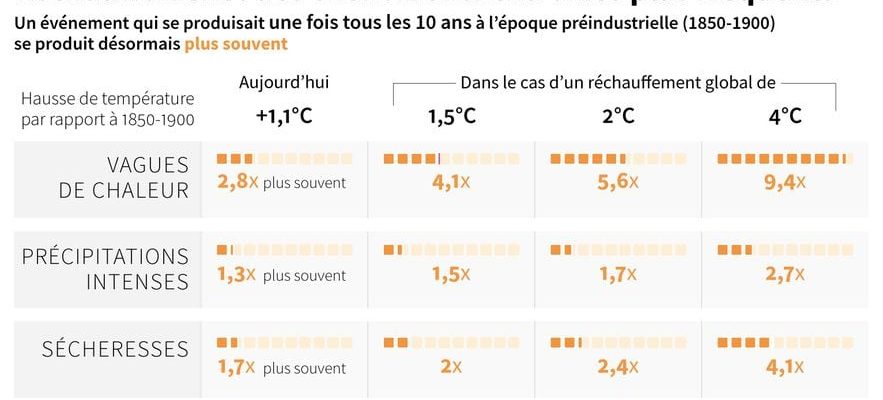The year 2023 is expected to be the hottest on record. And for good reason: it was marked by a litany of record statistics which all underline the urgency of acting against climate change, the UN insisted on Thursday, November 30. On the very day of the opening of COP28, the World Meteorological Organization (WMO) provided a reminder to delegates who did not understand the seriousness of the situation.
“Greenhouse gases are at a record high. Global temperatures are breaking records. The sea is at a record high and the Antarctic ice shelf has never been so small,” said the head of the WMO, Petteri Taalas, who denounces “a deafening cacophony of broken records.” For Antonio Guterres, the UN Secretary General, these temperature records should “give world leaders a cold sweat.”
Scientists warn that the ability to limit warming to a manageable level is slipping away from humanity. The 2015 Paris climate accords aimed to limit global warming to well below two degrees Celsius above pre-industrial average levels measured between 1850 and 1900 – and 1.5°C if possible. But at the end of October 2023 was already around 1.4°C above the pre-industrial baseline.
Global warming: more frequent extreme events
© / afp.com/Simon MALFATTO, Paz PIZARRO, Sylvie HUSSON, Sophie RAMIS
The hottest year ahead of 2016 or 2020
The agency will only publish its final report on the state of the climate in a few months, but it is already convinced that 2023 will be on the top step of the podium for the hottest year ahead of 2016 and 2020, in terms of of the thermometer from January to October. “The last two months are very unlikely to affect the rankings.”
The past nine years since 2015 have been the warmest since modern measurements began. “These are more than just statistics,” warned Petteri Taalas. “We risk losing the race to save our glaciers and slow the rise in sea levels,” he judges. “We cannot return to the climate of the 20th century, but we must act now to limit the risks of an increasingly inhospitable climate in this century and centuries to come,” he repeats like a mantra .
The WMO has warned that the El Niño climatic phenomenon, which appeared in the middle of the year, “risks further adding to the heat in 2024”. This phenomenon is generally associated with an increase in global temperatures during the year following its onset.
The preliminary report also reveals that concentrations of the three main greenhouse gases – carbon dioxide, methane and nitrous oxide – reached record levels in 2022, with preliminary data indicating that levels continued to rise This year. CO2 levels are 50% higher than in pre-industrial times, meaning “temperatures will continue to rise for many years to come” even if emissions are significantly reduced.
“Avoiding the worst of climate chaos”
All these records have dramatic socio-economic consequences, including a reduction in food security and mass migrations. “This year, we have seen communities around the world hit by fires, floods and extreme temperatures,” recalled Antonio Guterres in a video message. He called on leaders meeting in Dubai at COP 28 to commit to taking drastic action to curb climate change, including phasing out fossil fuels and tripling renewable energy capacity.
“We have a road map to limit global temperature rise to 1.5°C and avoid the worst of climate chaos,” he said. “But we need leaders to kick off at COP28.”
